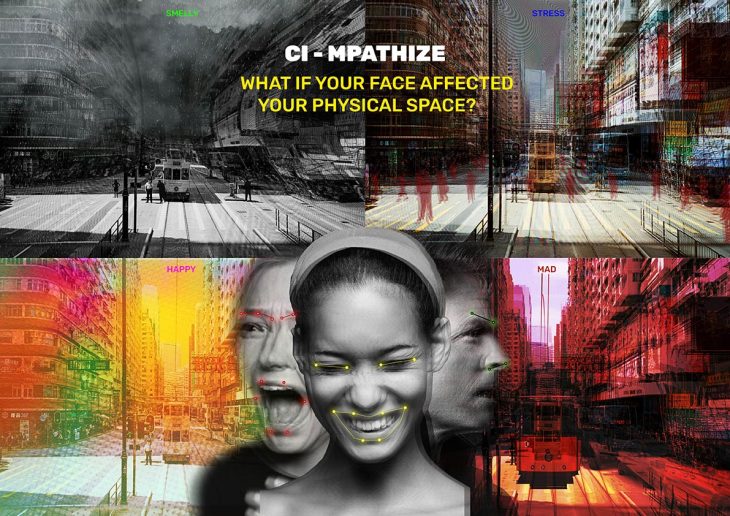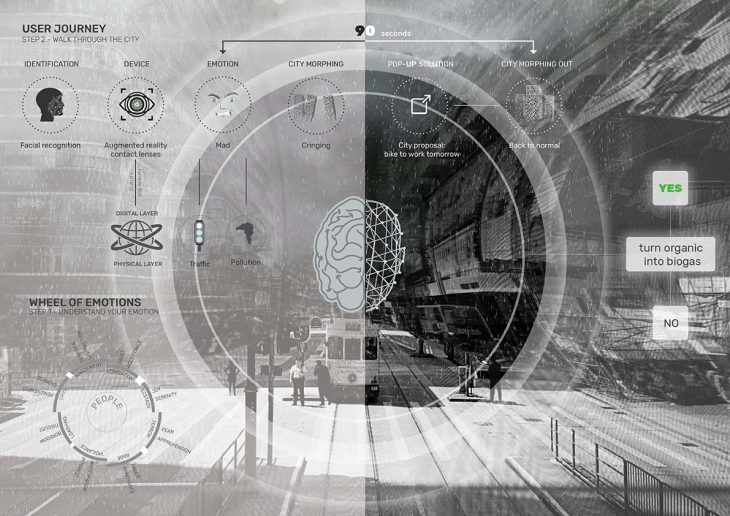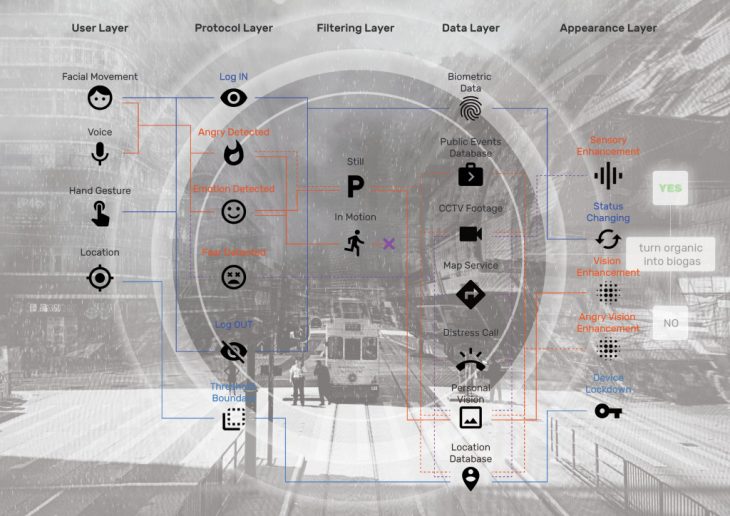It is difficult to conceive of cities without imagining the multitude of emotions that animate life on their streets. With advancement in facial recognition, spaces can acquire the ability to not only ‘see’ but also to understand these emotions. Could it be possible that as similarly as humans mirror emotion one to another the city was also capable of doing the same? If so, what if our emotions could affect the physical space and in doing so illicit a human-like response from the city? Both the user and the city would be able to empathize over common joys and grievances ( disgusted over smelly streets, etc.)

Augmented reality contact lenses would allow users to experience the city with computer-generated images superimposed over the real world. Facial recognition software will be used to recognize the emotion on an individual’s face. When the emotion mirrors the city´s, the user´s vision of the city would gradually begin to morph to represent a specific emotions. The city’s role becomes to create awareness as to the correlation between our emotional state and the cities health.The city will not only responds to the user but also provide them with a solution.

In neuroscience studies: the physiological lifespan of an emotion in the body and brainis 90 seconds. How come this is true? In fact,we keep our emotions lingering with our thoughts and scenarios. For this reason, the experience will not be a constant in their daily lives but act as an alarm or warning during different time in the day.
Augmented reality contact lenses would be used as a way to morph the city according to a range of emotions. Wearing these lenses would allow users to experience the city with computer-generated images superimposed over the real world.

As far fetched as this might seem, this is not so. According to the independent as of 2014, “ Samsung has filed a patent on ‘smart’ contact lenses, capable of projecting images straight into the users’ eyes”. It’s also fitted with a multitude of sensors able to detect eye movement and blinking, which is how users would control the display.
More recently, Mojo Vision raised $50 million, for a technology described as “invisible computing,” a world that serves up “information when you need it” and lets you connect with others “at a glance, anytime, anywhere, and all while looking like you.”
This project would be beneficial for the improvement of cities. One of the most important benefits of empathy is that it improves relationships. Empathy is our capacity to view the world from someone else’s perspective; to dream our way into the mind and heart of another and consider how we might feel in that person’s situation. The ability to empathize with the city could be a breakthrough towards behavioral change for the good of the city.
With the advancement of wearables, sensors are becoming more and more integrated in our bodies. This could be taken even further to be a way for users to browse the city with all their senses. Giving individuals the capability to navigate the city with heightened senses. In this way, Dunaway´s Cyborg manifesto expressing how the human becomes a hybrid of machine and organism, a creature of social reality as well as a creature of fiction” comes closer to fruition.
Eye of the City is a project of IaaC, Institute for Advanced Architecture of Catalonia
developed at Master in City & Technology in (2018/2019) by:
Students: Natali Barada, Polina Skorina, Haining Zhou, Natalie Adhiambo Ouma
Faculty: Carlo Ratti, Federico Riches, Alberto Benetti